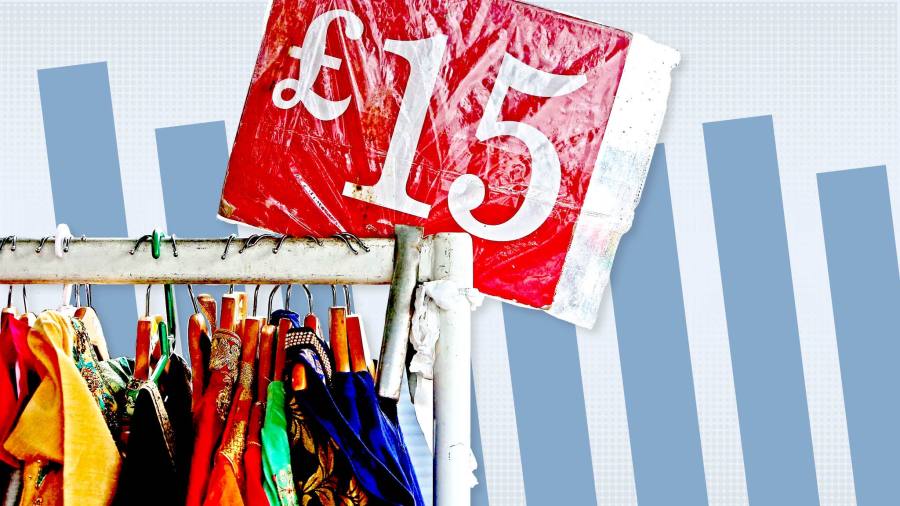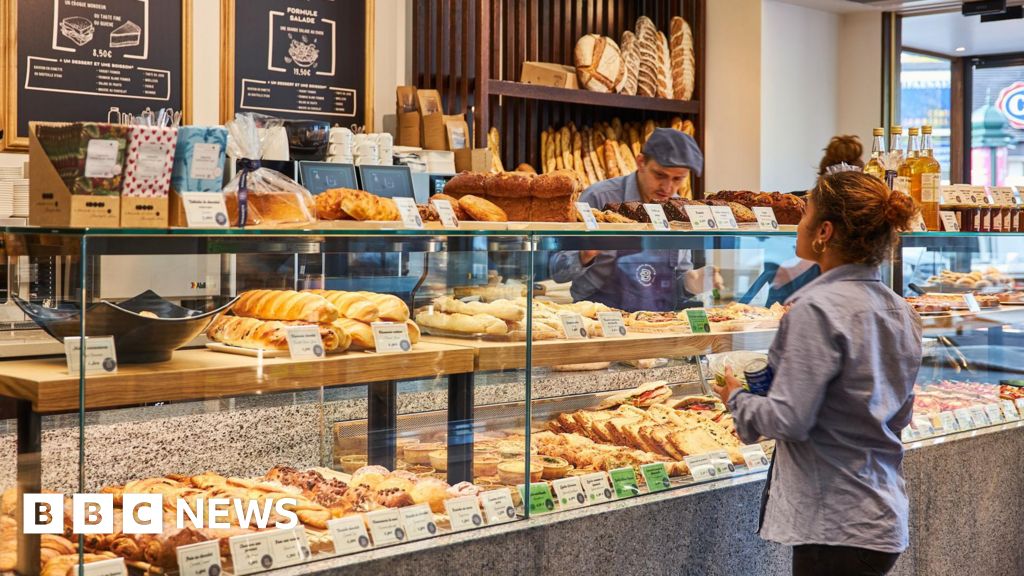The latest UK inflation data has cast doubt on the strategy of ministers and the Bank of England to reduce price growth.
With official figures on Wednesday showing Britain’s inflation rate falling less than expected and remaining in double digits at 10.1 per cent in March, UK price growth was significantly higher than that of the eurozone, which fell sharply to 6.9 per cent, and the US, which dropped to 5 per cent in the same month.
But while the details and underlying trends were not entirely reassuring, they also suggest that the UK is not the outlier that initial comparisons suggest.
Prime minister Rishi Sunak and his chancellor, Jeremy Hunt, are highly likely to meet their commitment to halve inflation by the end of the year, say economists.
Sunak made the pledge at the beginning of January when the headline inflation rate was 10.7 per cent. New projections on Wednesday from both Capital Economics, the consultancy, and Citigroup, the investment bank, respectively put the rate for December 2023 at 3.7 per cent and 3 per cent, easily meeting the prime minister’s target.
In the Treasury’s monthly round-up of economic forecasts, also published on Wednesday, only four of 27 UK forecasters predicted that CPI inflation would exceed the government’s pledge and be above 5.4 per cent by the fourth quarter of this year.
The reason behind the rapid fall in the inflation rate is that by this summer, gas and electricity prices are set to be lower than last year, with wholesale gas prices falling almost 85 per cent since their peak last August.
Paul Dales, chief UK economist at Capital Economics, said that while ministers would claim credit for the drop in inflation, they would not have contributed to it. “The best target you’re going to set yourself is one you can hit without doing anything,” he said.
Energy currently contributes 3.5 percentage points to the 10.1 per cent inflation figure, and this is set to disappear by the end of the year. The first big fall in inflation is expected in next month’s data, with the headline rate predicted to decrease by around 2 percentage points in a single month.
Comparing inflation in the UK with rates in other countries has been complicated over the past year by different the energy subsidy regimes across Europe, by the degree to which households directly or indirectly consume natural gas for home heating and electricity generation, plus by the weight of food in national inflation indices.
This has meant inflation in the eurozone has been highest in the Baltic states — Estonia, Latvia and Lithuania — and Slovakia, with rates significantly higher than in the UK The more rapid drop in wholesale energy prices in other countries, especially Spain and Germany, has helped reduce the overall eurozone rate more quickly than that in the UK.

However, the eurozone still does not have inflation under control and its core rate — excluding energy, food, alcohol and tobacco — was steady at 5.7 per cent in March, similar to the UK’s core rate of 6.2 per cent. The US core rate rose from 5.5 per cent in February to 5.6 per cent per cent in March.
Many economists think UK and eurozone inflation are essentially similar and too high for comfort. In separate notes on Wednesday, Philip Rush, founder of consultancy Heteronomics, said there was still “excessive” underlying inflation pressures in both.
But economists are more concerned about the UK labour market and wages, which continue to worry the Bank of England. Although definitions and time periods differ a little, the UK’s 6.9 per cent annual growth in private sector pay is higher than the eurozone’s business sector wage increase of 5.2 per cent and the 4.2 per cent seen in the US.
Andrew Bailey, the BoE governor, has repeatedly pointed out that wages are a key concern of the bank’s rate-setting Monetary Policy Committee, and that the UK’s labour market performance is in some areas “unique”, particularly because of the number of older people who have left the labour market since the pandemic.
Dales said that with labour force participation problems related to ill health and problems in the NHS, “we feel these [unique UK] problems will stick around longer”.
Economists also point out that even though UK inflation will fall and its core rate is not much higher than in the eurozone or US, the BoE should be concerned because inflation falling to around 4 per cent is not the same as durably returning price increases to the BoE’s 2 per cent target.
There are nearly 270 individual items included in the UK’s inflation calculation; the proportion of those with inflation rates over 5 per cent has risen in recent months from 28.6 per cent to more than 35 per cent, indicating a broadening of price pressures.

Although most forecasts believe UK inflation will fall below 2 per cent during 2024, economists also think the central bank will need to raise interest rates above the current 4.25 per cent rate to achieve this.
Financial markets have priced in a quarter-point rate rise for May and a three-quarters of a percentage point rise by September, bringing the rate up to 5 per cent.
These rises, if they happen, would place a recessionary force on the UK economy, exacerbating cost of living pressures, especially for people with mortgages coming towards the end of a fixed-rate period.
Set against that, most economists have been revising their UK economic growth forecasts up this year because cheaper energy prices will lift some of the stress from households and allow more non-inflationary economic growth.
The BoE’s difficult job will be to balance these forces and seek to work out how far interest rates need to rise to quell price rises.
Few feel confident about forecasting the path ahead when inflation has been hitting 40-year highs in many countries, but economists on Wednesday were almost united in thinking the central bank will raise rates again on May 11.
Paula Bejarano Carbo, associate economist at the National Institute of Economic and Social Research, said the one thing that was clear about the UK economy now was that “inflationary pressures remain persistent”.
Credit: Source link











